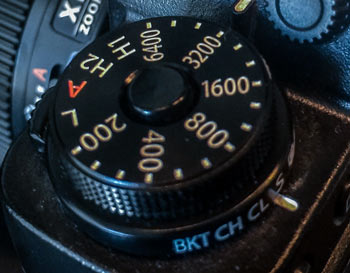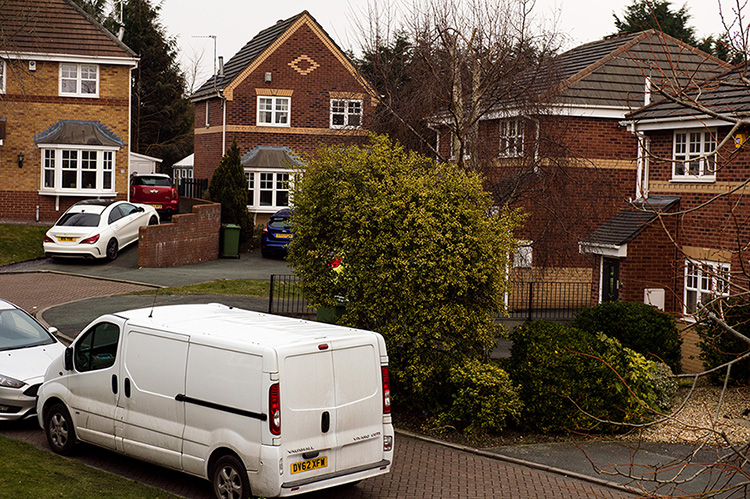Another interesting article: (
https://improvephotography.com/34818/iso-invariance/)
Copied as some posters don't read links:
ISO Invariance: What it is, and which cameras are ISO-less
In
Gear by Jim Harmer
61 Comments
ISO invariance is an exciting new frontier in photography, and I've been experimenting with it extensively over the last few days to see if it's a technique that I can add to my photography tool belt (Fine… I admit it. I've never even worn a tool belt. I'm the worst handyman on the planet.)
In essence, ISO invariance allows the photographer to entirely skip over the ISO when setting the exposure and never changing it, but still being able to take full advantage of the low light performance of the camera. It's still a brand new concept (the first mention I could find of it online was in 2011), and really nobody started talking about it until
DPReview started publishing more information about it 6 months ago.
What is ISO Invariance (An ISO-less Camera)?
The short answer is that ISO invariance means that a camera will produce the exact same image quality by staying at ISO (or whatever the base ISO is on the camera) and dramatically underexposing the photo and then brightening it up again in Lightroom, as if you had shot the camera at the proper ISO in the first place.
It makes your head spin for a minute, but don't worry. We'll go through lots of examples and it'll make sense shortly.
Let's suppose you want to go out and shoot a photo of the stars. As a starting place, suppose we set our camera settings to f/2.8, 20″ shutter speed, and ISO 3200. Those are pretty standard settings for night photography, and they'll likely produce a nice image. But what if you kept the shutter speed and aperture the same, but dropped your ISO to 100? The resulting photo is dramatically underexposed, but if you take that underexposed file into Lightroom and bring up the exposure, it suddenly looks identical to the photo shot at ISO 3200. Increasing the exposure in Lightroom introduces noise, but just the same amount of noise as the high ISO would have introduced.
Thus, we say this camera is ISO invariant (“invariant” means something that remains unchanged despite different circumstances), or sometimes photographers say the camera is ISO-less.
 What Cameras Are ISO Invariant?
What Cameras Are ISO Invariant?
First of all, a disclaimer. Just because a camera fits in the “ISO invariant” category below doesn't mean it's precisely the same thing to shoot at ISO 100 and brighten vs shooting at a high ISO. There are slight differences in how the files look with some benefits and drawbacks to each. What we're focused on here is the levels of noise and reasonable dynamic range and highlight/shadow detail.
So you can't PROVE that any camera fits in any of these camps, but I made my best judgment call given the test results we got after I polled the Improve Photography Podcast listeners and asked them to send me their raw file tests using many many different cameras.
Cameras that are ISO Invariant
- Sony A7RII (Much better highlight detail from shooting at base and brightening later, but lose a a slight amount of shadow detail. I might even dare say that noise is handled JUST A TINY TINY bit BETTER on the brightened picture than on the high-ISO shot.)
- Fuji XT1 (This is my personal camera. I switched from Nikon to Fuji. It's probably the most iso-less camera out of all those that I tested.)
- Fuji X100
- Fuji XE1
- Nikon D810 (Relying on data from DPReview. The Sony A7R uses the same sensor, so I would ASSUME that it is as well.)
- Nikon D750 (Only did one test with this, but appears to be entirely ISO invariant. Would like to test more)
- Nikon D7100 (Tested only at base vs ISO 800, but the noise pattern is identical)
- Nikon D5500 (I did not personally test this one. Relying on data from DPReview)
- Pentax K5 (At ISO 800 vs base ISO, you can't tell any difference. Very high ISOs not tested)
Cameras that are Somewhat ISO Invariant
- Olympus OMD-EM1 (Tough call. Detail and contrast are definitely lost when brightening in post, but noise appears to be reduced quite a bit on the brightened image. I'd like to do more testing.)
- Olympus OMD-EM5 II (Difference is indistinguishable when zoomed out, but when you zoom in, the higher ISO photo is VERY VERY slightly better in terms of noise and contrast. The 40mp mode brings the contest even closer.)
- Sony A7S (I was interested to see this one. The noise pattern on the brightened image is close to the high ISO shot. However, the brightened image lost a SURPRISING amount of contrast).
- Sony Nex 7 (This one is really close to being ISO invariant. The noise is about the same, but contrast is lost on the brightened image. Very close to being ISO-less.)
Cameras that are NOT ISO Invariant
- Canon 5D Mark III (Not even CLOSE! Nick Page tested this one for us and it looks really bad when you shoot low and brighten later.)
- Canon 6D (Not even close, and the camera did a horrible job of selecting the white balance in the under-exposed shot.)
- Canon 70D and Canon 60D (Not too bad, but it's still much better to shoot at the higher ISO. Horrible white balance in the underexposed shot.)
- Canon 7D (Not nearly as bad as the 5DIII, and you can't tell the difference with the naked eye at ISO1600, but when you zoom in it's obvious that the higher ISO shot is cleaner. White balance not good in the underexposed photo.)
Thank you to the following Improve Photography readers from all around the world who contributed raw files for this test: Dale Mellor, Nick Page, Darin Mellor, Linda Maier, A Zelkanovic, Ryan Fritsch, Tristan Davies, Benjamin Boynton, Julio Debeux, Jenn Dijk, Robert Connor, Stephen Tillman, Sarah Scully, Najib Mahmud, Mark Franks, Clarence Hagler, Nelson Tapias, and Wesley York.

THE ISO DIAL ON THE FUJI XT1, WHICH IS PROBABLY THE MOST ISO INVARIANT CAMERA WE TESTED.
Why Would Anyone Want to Use This?
There are lots and lots of reasons why this would be a fantastic technique in certain situations. It's not something I'd use every day, but it's certainly a technique I will implement in my night photography.
One of the reasons is that by brightening the exposure in post, you can selectively brighten some areas and leave others darker. This reduces the noise in some areas of the image, whereas if you set the ISO high in camera, it makes all of the photo have the higher amount of noise.
Another reason why you'd want to shoot an image at base ISO and brighten later is when you are concerned about preserving highlight detail. Suppose you're in Time Square in New York and you want to take a shot of the colorful lights above the streets at night. If you shoot at a high ISO to properly expose, there isn't enough dynamic range to properly preserve highlights and still expose the shadows. However, if you do this after the fact, you could easily brighten the image without blowing out highlight detail in the bright signs.
Another reason is when shooting night photography. It can be difficult to judge how much noise is present in a photo when you're just looking at the tiny preview on the LCD of the camera. Many times I've ruined night photography shoots because I pushed the ISO a little too high for the camera. If I would have simply shot the whole night at ISO 100 and brightened later, this would not have happened.
The limitation to shooting at base ISO and brightening later, however, is that you'll see a black preview on the back of your LCD all night. Makes it kinda tough to judge the composition! So I plan on flipping back and forth. Use high ISOs on my Fuji XT1 for getting the composition, and then once I have the shot looking how I want, I'll shoot one at base ISO (which is 200 on the Fuji XT1 but 100 on most cameras) and keep that one for the official shot.





